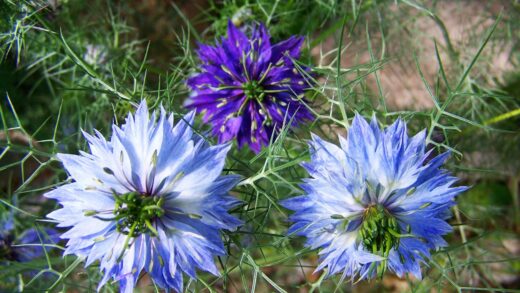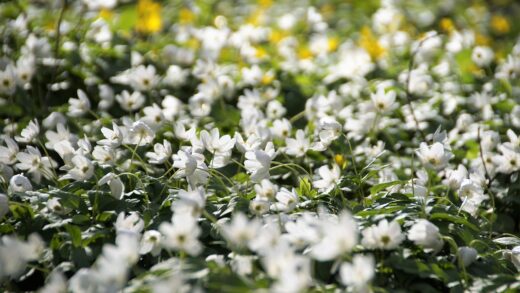Providing the proper nutrition is a cornerstone of cultivating large, vibrant persian onions that will be the envy of the neighborhood. While these plants are not excessively heavy feeders, a well-thought-out fertilization plan will ensure they have the essential nutrients required to build strong bulbs and produce their magnificent floral displays year after year. The key is to supply a balanced diet that supports all aspects of the plant’s development, from robust root growth and healthy foliage to the formation of those iconic, densely packed flower heads. Understanding what to feed them, when to feed them, and just as importantly, what to avoid, will make a significant difference in their overall health and performance. This approach to nutrition ensures the plant has the energy reserves not only for the current season’s show but also for sustained success in the years to come.
The nutritional needs of the persian onion are primarily centered around the three main macronutrients: nitrogen (N), phosphorus (P), and potassium (K). Each of these plays a distinct and vital role in the plant’s life cycle. Nitrogen is essential for the development of lush, green foliage. This is particularly important in the early spring as the leaves are the plant’s engine, using photosynthesis to create the energy needed for growth. Phosphorus is crucial for the development of a strong and extensive root system and also plays a key role in the transfer of energy within the plant, which is vital for flower production. Potassium is arguably the most important nutrient for bulbous plants, as it is instrumental in the formation and strengthening of the bulb itself and improves the plant’s overall vigour and disease resistance.
A balanced fertilizer is one that provides all three of these macronutrients. When you look at a fertilizer package, you will see three numbers, such as 5-10-10 or 10-10-10. These numbers represent the percentage by weight of nitrogen, phosphorus, and potassium, respectively. For persian onions, a fertilizer that is lower in nitrogen and higher in phosphorus and potassium is generally ideal. An excess of nitrogen can stimulate the growth of soft, floppy leaves at the expense of the flowers and can also make the plant more susceptible to pests and diseases. Therefore, a formulation like a 5-10-10 or a specific bulb fertilizer is often a more suitable choice than a general-purpose, high-nitrogen lawn fertilizer.
Beyond the macronutrients, persian onions also benefit from a range of micronutrients, which are needed in smaller quantities but are still essential for healthy growth. These include elements like calcium, magnesium, and iron. The good news is that if your soil is rich in organic matter, it will likely contain a sufficient supply of these micronutrients. Regularly amending your soil with well-rotted compost or manure is one of the best ways to provide a slow-release source of both macro and micronutrients, while also improving the soil’s structure and its ability to retain moisture. A healthy, living soil is the foundation of good plant nutrition.
The best time to fertilize
Timing is everything when it comes to fertilizing persian onions effectively. Applying nutrients when the plant is not able to use them is wasteful and can even be detrimental. The most important time to provide fertilizer is in the early spring, just as the first green shoots are beginning to push through the soil. This is the start of the plant’s active growth phase, and providing nutrients at this point gives it the fuel it needs for the rapid development of its leaves and the forthcoming flower stalk. A single application at this time is often sufficient for the entire season.
More articles on this topic
There are several options for this early spring feeding. One of the easiest and most effective methods is to use a slow-release granular fertilizer. These products are designed to break down and release their nutrients over a period of several weeks or months, providing a steady supply of food for the plant throughout its main growing period. You can simply sprinkle the recommended amount of granules on the soil surface around the plant and gently scratch them into the top few centimetres. The spring rains will then help to dissolve the granules and carry the nutrients down to the root zone.
Another excellent option for fertilizing at planting time in the autumn is to incorporate bone meal into the bottom of the planting hole. Bone meal is a natural, organic source of phosphorus and calcium, and it is particularly effective at promoting strong root development. As the bulb establishes its root system over the winter, the phosphorus from the bone meal will be readily available. This helps to give the plant a strong start, setting it up for vigorous growth once spring arrives.
It is important to avoid fertilizing your persian onions late in the season, particularly after they have finished flowering. At this stage, the plant is beginning to enter its dormancy period, and its nutrient uptake slows down significantly. Applying fertilizer during the summer dormancy can encourage unseasonal, weak growth that may be damaged by autumn frosts, and it can also interfere with the natural hardening-off process of the bulb. The focus after flowering should be on allowing the foliage to die back naturally, not on stimulating new growth with fertilizer.
Organic versus synthetic fertilizers
When choosing a fertilizer for your persian onions, you will encounter both organic and synthetic options, and each has its own set of advantages. Organic fertilizers are derived from natural materials, such as bone meal, blood meal, compost, and well-rotted manure. They tend to release their nutrients slowly as they are broken down by microorganisms in the soil. This slow-release action reduces the risk of over-fertilizing or “burning” the plant’s roots and provides a more sustained source of nutrition.
More articles on this topic
A major benefit of using organic fertilizers and soil amendments like compost is that they do more than just feed the plant; they also feed the soil. They help to improve the soil’s structure, increase its water-holding capacity, and encourage a healthy population of beneficial soil organisms. A soil that is rich in organic matter is more resilient and better able to provide for the long-term needs of your plants. For persian onions, incorporating a generous amount of compost into the soil before planting is one of the best things you can do to ensure their success.
Synthetic fertilizers, on the other hand, are manufactured chemical products that provide nutrients in a form that is immediately available to the plant. This can be an advantage if you need to correct a nutrient deficiency quickly. They are often more concentrated than organic fertilizers, so you need to use less, and their exact nutrient content is precisely stated on the label. However, they do not offer the same soil-improving benefits as organic materials, and if they are over-applied, they can damage plant roots and potentially leach into the groundwater.
For a balanced and sustainable approach, many gardeners find that a combination of both organic and synthetic methods works well. You can build a healthy soil foundation by regularly amending it with compost and other organic matter. Then, you can use a targeted application of a balanced granular or liquid synthetic fertilizer in the spring to provide the extra boost of nutrients needed for a spectacular floral display. This integrated approach leverages the long-term benefits of organic soil conditioning with the precise, fast-acting nature of synthetic fertilizers.
Preparing the soil with nutrients
The best fertilization strategy begins before you even plant the bulbs. Preparing the soil thoroughly and enriching it with the right nutrients will create an ideal environment for your persian onions to thrive from the very beginning. As has been emphasized, good drainage is critical, but so is good fertility. The process of soil preparation is the perfect opportunity to incorporate the slow-acting, foundational nutrients that will support the plants for years to come.
Start by loosening the soil in your chosen planting area to a depth of at least 30 centimetres. This is the time to add your soil amendments. Spread a generous layer, perhaps 5 to 10 centimetres thick, of well-rotted garden compost or manure over the entire area. Compost is an excellent all-round soil conditioner; it provides a balanced range of nutrients, improves soil structure in both clay and sandy soils, and enhances the soil’s ability to retain moisture. Work the compost thoroughly into the loosened soil with a garden fork or tiller.
This is also the ideal time to add a fertilizer that is high in phosphorus and potassium to encourage strong bulb and root development. As mentioned, bone meal is a fantastic organic source of phosphorus. Another excellent organic amendment is wood ash, which is a great source of potassium. If you are using these, sprinkle them over the soil according to the package directions along with the compost and mix them in well. A balanced, slow-release granular bulb food can also be incorporated into the soil at this stage.
By enriching the entire planting bed rather than just amending individual planting holes, you encourage the plant’s roots to spread out and explore a wider area of fertile soil. This leads to a stronger, more resilient plant. This initial, thorough soil preparation can significantly reduce the need for supplemental feeding in subsequent years. A deeply cultivated, well-drained, and nutrient-rich soil is the single most important investment you can make in the long-term health and beauty of your persian onion display.
Recognizing nutrient deficiencies
While persian onions are generally not prone to nutrient deficiencies, especially when planted in well-prepared soil, it is helpful to be able to recognize the signs should they occur. The appearance of the foliage is often the first indicator that something is amiss. A general yellowing of the older, lower leaves can be a sign of a nitrogen deficiency. If the entire plant appears pale and stunted, this could also point to a lack of nitrogen, which is essential for chlorophyll production and leafy growth.
A phosphorus deficiency can be more difficult to diagnose. It sometimes manifests as stunted growth and a dull, slightly purplish tinge to the leaves. Since phosphorus is vital for root development, a deficiency might also result in a poorly anchored plant. However, these symptoms can also be caused by other issues, such as cold soil temperatures in early spring, which can temporarily inhibit phosphorus uptake. Therefore, it is important to consider all the potential factors before concluding that there is a deficiency.
A lack of potassium, which is critical for overall plant vigour and bulb formation, can sometimes appear as a yellowing or browning along the margins of the older leaves. The plant may also have weaker stems and be more susceptible to diseases. Since potassium plays a key role in regulating water movement within the plant, a deficient plant might also show signs of wilting more readily. A soil test is the most accurate way to determine if you have a specific nutrient deficiency.
If you do suspect a deficiency, you can address it with a targeted fertilizer application. For a quick response, a liquid feed is often the best choice, as the nutrients are immediately available to the plant roots. You could use a balanced liquid fertilizer or one that is specifically formulated to address the nutrient you believe is lacking. However, for the long-term health of your plants, the best strategy is always prevention. Building a fertile, organic-rich soil from the outset is the most effective way to ensure your persian onions have all the nutrients they need for a breathtaking performance.


















